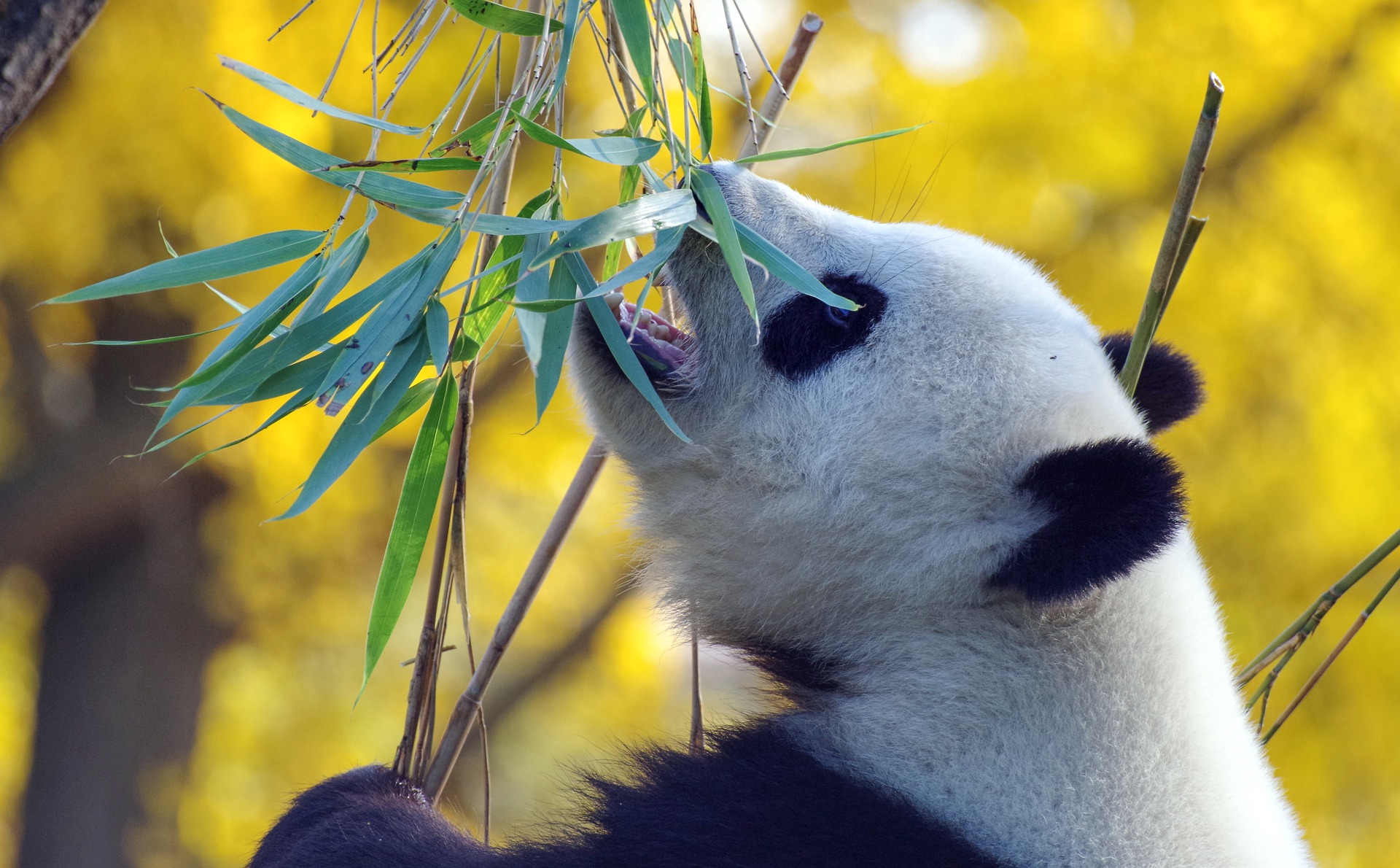Giant pandas are indeed one of the most lovable creatures on the planet. In a recent CNN Travel blog post, giant pandas were rated third in a “cuteness ranking.” Despite being overly cute, giant pandas are quite peculiar animals. From their physical characteristics, powerful jaws, teeth, and claws all suggest carnivorous traits, but the giant panda diet is almost entirely herbivorous. This fact still baffles scientists to this day. The result of this adaptation, coupled with poaching, are some of the reasons the giant panda nearly became extinct. Giant pandas have a remarkable history and unique features that make them some of the most interesting animals on the planet.
Panda family
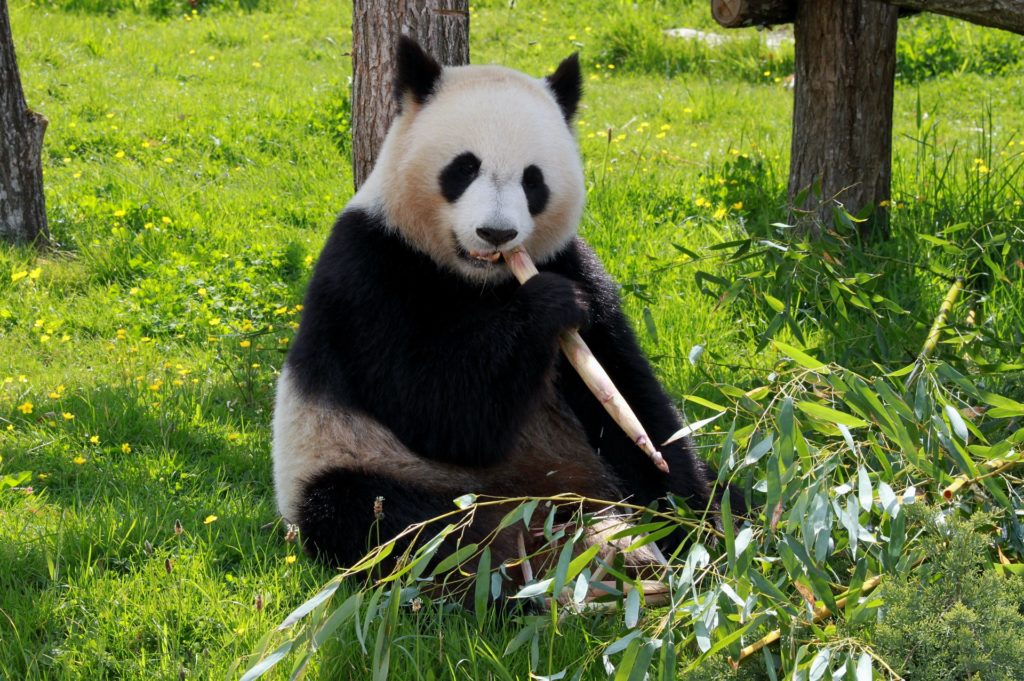
Giant pandas have the binomial name Ailuropoda melanoleuca. This means that they are of the genus Ailuropoda that consists of, surprisingly, only one existing species, which is the melanoleuca. The second subspecies, Ailuropoda melanoleuca qinlingensis, is more commonly known as the qinling panda or brown panda. Instead of the black on white coloration, they (unsurprisingly) have dark brown on light brown coloring. Sadly, the other members of the genus are prehistoric hence only fossilized species. The closest animal that is taxonomically similar to the giant panda is red panda (also featured on CNN Travel blog’s cutest ranking, it must run in the family!).
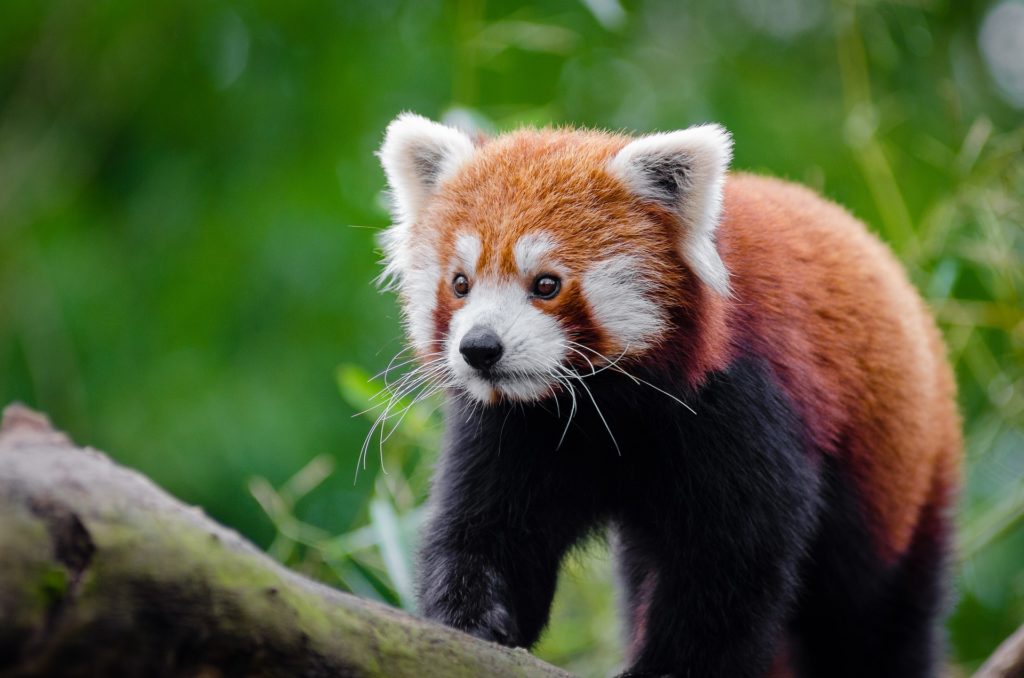
The red panda, Ailurus fulgens, is, however, no longer considered a bear and is the only living representative of the Ailuridae family.
Where are giant pandas found?
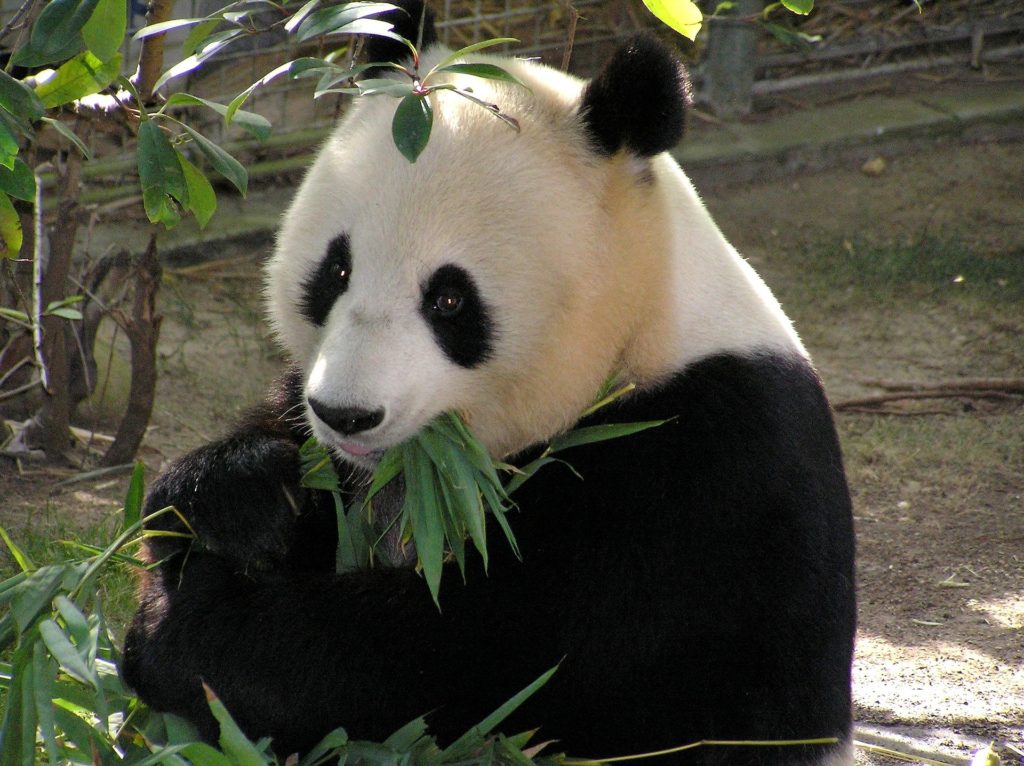
Giant panda or panda bears are native to China, specifically the south-central part of the Asian country. Before human intervention, these bears could easily be found throughout eastern and southern China and even in the neighboring countries of Myanmar and the north of Vietnam. However, human activities have expanded over the centuries, and giant pandas have been pushed to smaller habitats. Panda bears in the wild are now only found in about twenty isolated patches of bamboo forest in the mountain ranges in China’s provinces of Sichuan, Shaanxi, and Gansu. These areas are suitable for giant pandas because of the temperate climate that is cool and wet and supports bamboo forests, which is the primary source of food for these pandas. Pandas dens are made from hollowed-out logs or stumps of conifer trees found within the forests.
The looks that give the cuteness
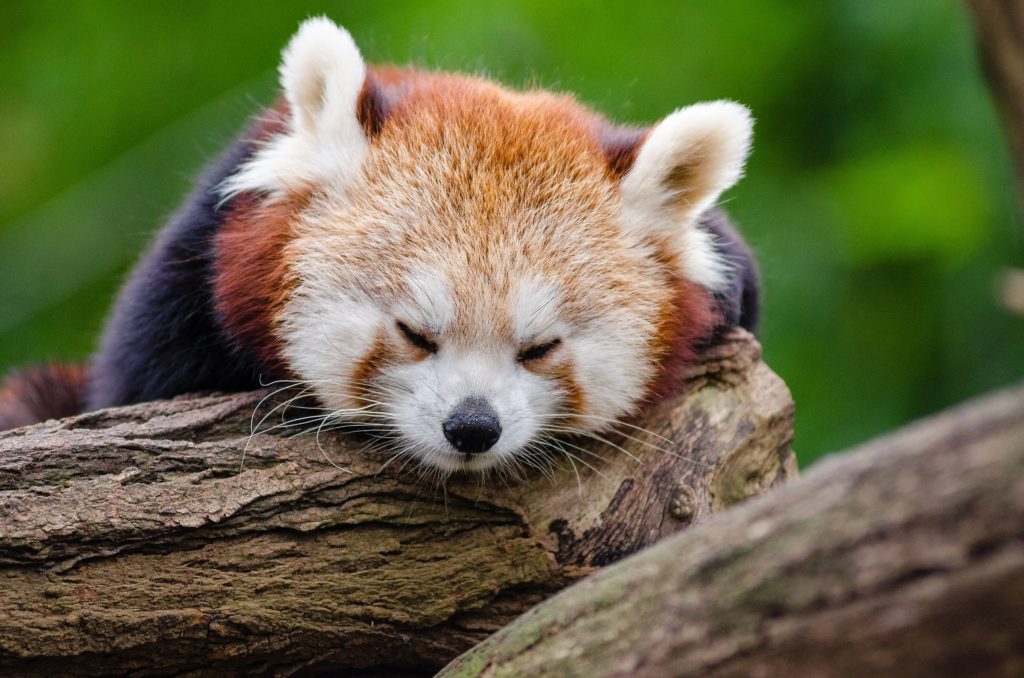
Panda bears have a distinct monochromatic color scheme. Their black and white fur coat is their defining factor and sets them apart from the other bears. The pattern also aids in camouflage, and pandas in the wild are nearly invisible when inside the dense bamboo. This might explain why wild pandas are quite the elusive bunch. Size-wise, pandas are quite large. They can grow up to five feet tall and weigh upwards of 100 kilograms/ 275 lbs. For a comparison, giant pandas are about the same size as the American Black bear.
Pandas have another unique feature, which is a flexible wrist bone that allows them to use a pseudo thumb feature. Because of this, they can cunningly manipulate objects. Pandas’ favorite position is a relaxed eating posture with their hind legs stretched out in front of them. Giant pandas are also able to climb trees and swim well. They have also been seen playing in the snow and doing somersaults.
Some scientists posit that the reason we may find pandas adorable is that they might resemble babies. Their snub noses, fat cheeks, clumsy-like gait, and the black patches around their eyes that make their eyes appear larger than they are, excite us in the same way babies do. This would explain why we find them adorable.
New generations
Pandas are mostly solitary animals and are rarely seen in groups. With their keen sense of smell, males avoid each other, and when it is time to mate, they can sniff out females. Gestation in giant pandas is about five months and may bear one or two cubs. Baby giant pandas are born blind and about 1/900 of the size of their mothers, and weigh almost the size of a stick of butter. This makes them vulnerable and in need of a lot of care. If a mother bears two cubs, it is cumbersome to take care of both, and one might not survive. Baby pandas start being more independent at three months of age when they can crawl. Infant pandas are also born white and do not develop the signature black-and-white look till later.
Diet
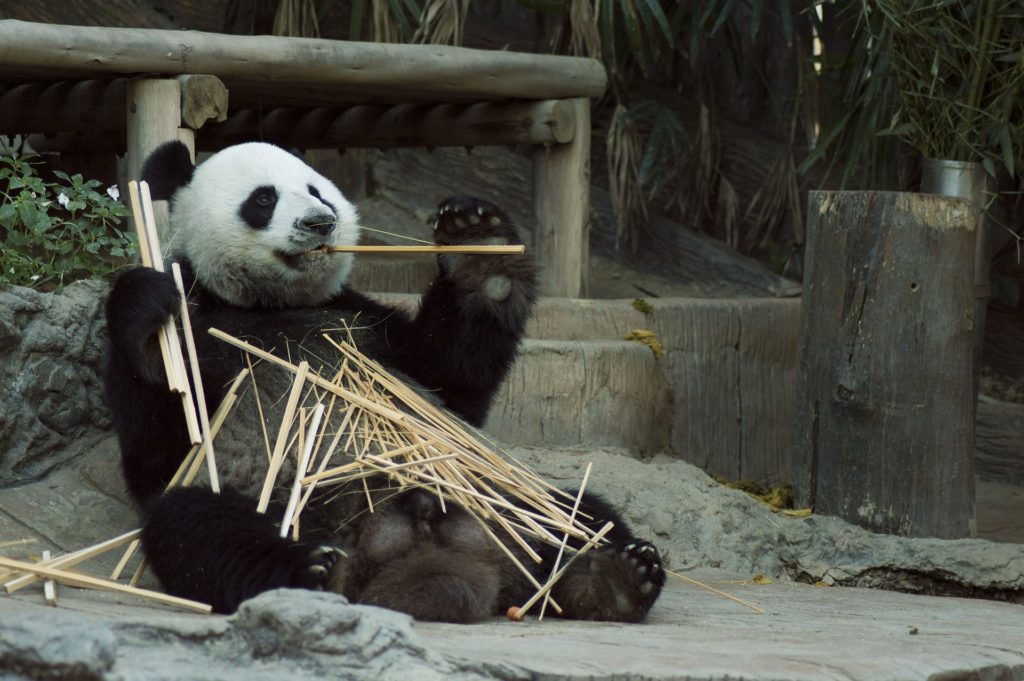
Despite their carnivorous classification, giant pandas eat a lot of bamboos. They are therefore classified as folivores. This is because they do eat just the leaves and shoots of bamboo. In the winter, however, they snack on the roots of the bamboo. They can eat up to 40 kilograms of bamboo in a day. It is said that pandas can eat for close to half of the day and relieve themselves at least 12 times a day. The reason for this much consumption is because bamboo is of very little nutritional value. Pandas occasionally also eat small rodents and birds.
Almost went extinct
Giant pandas are probably one of the best conservation success stories of the recent past. Giant pandas have been classified as a vulnerable species after they nearly went extinct in the 1990s. This was because of human activity in the form of hunting and expansion of economic activity. The latter led to encroachment of giant panda habitats leading to less food for the animal. The Chinese government recognized the need to save the pandas and illegal hunting of the animal as well as established and maintained panda reserves. Currently, there are less than 1,900 pandas in the wild, which is a significant improvement that leads the animal to be considered as vulnerable as compared to endangered.
Interesting facts
A few interesting facts about giant pandas;
- They are China’s national symbol
- Their eyes have vertical irises (like cats) and were locally referred to as cat bears
- They are the World Wildlife Fund for Nature’s logo.
Giant pandas are a testament that conservation efforts, with the right support and initiatives, can lead to the restoration of species that are on the verge of extinction. This is a challenge, as well as a source of inspiration for the human race. Imagine how dull we would be without this animal’s cuteness!




























